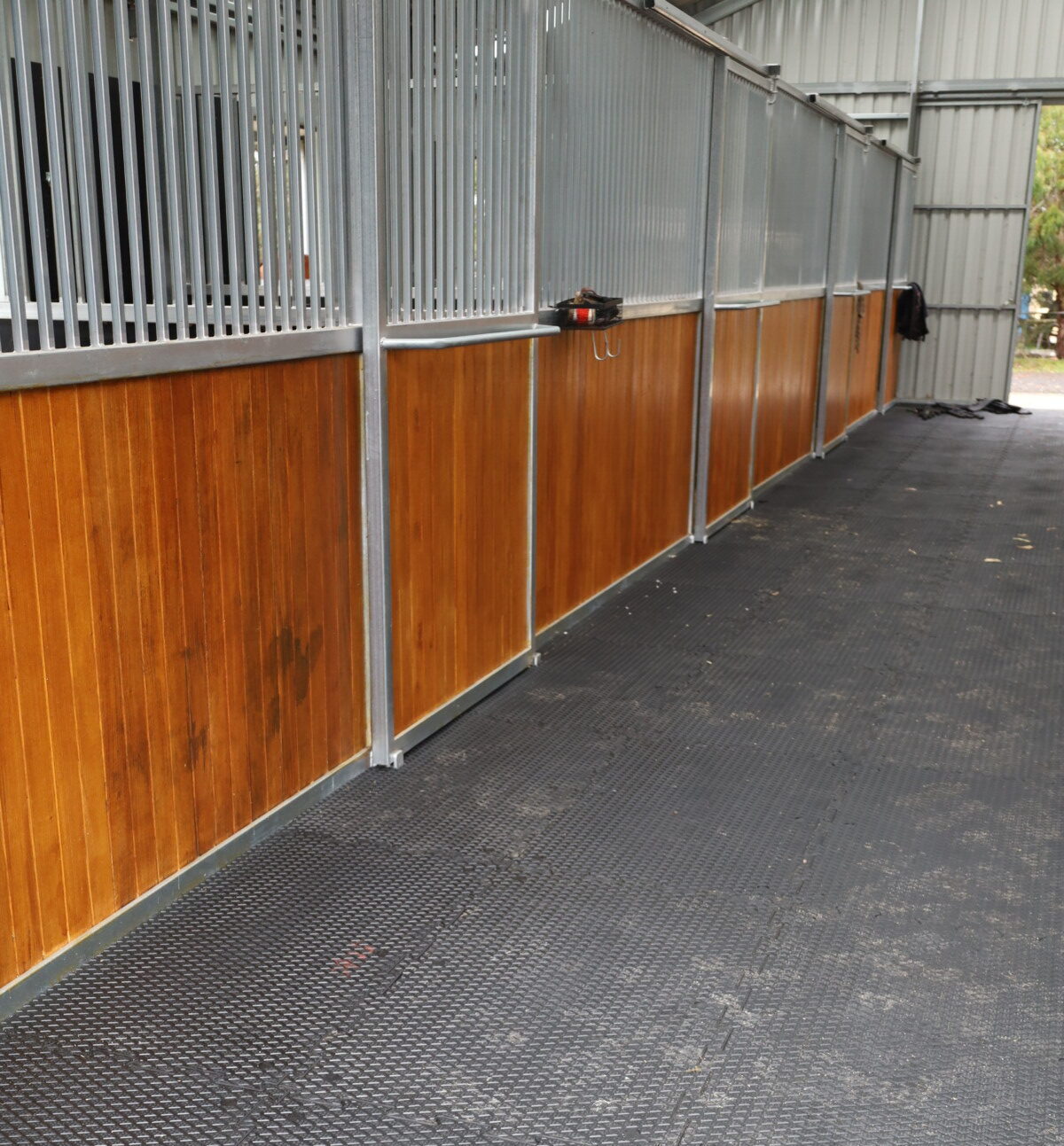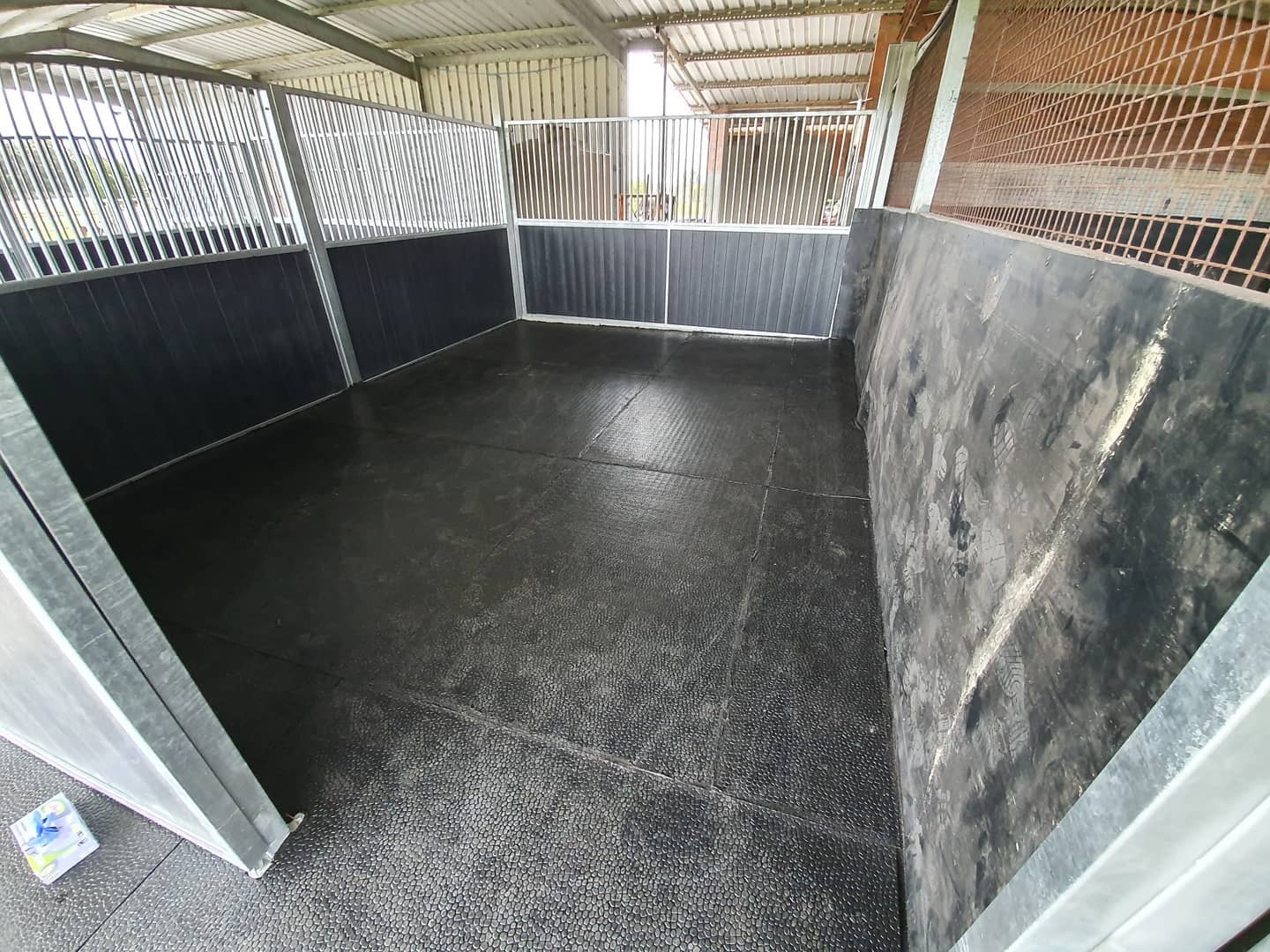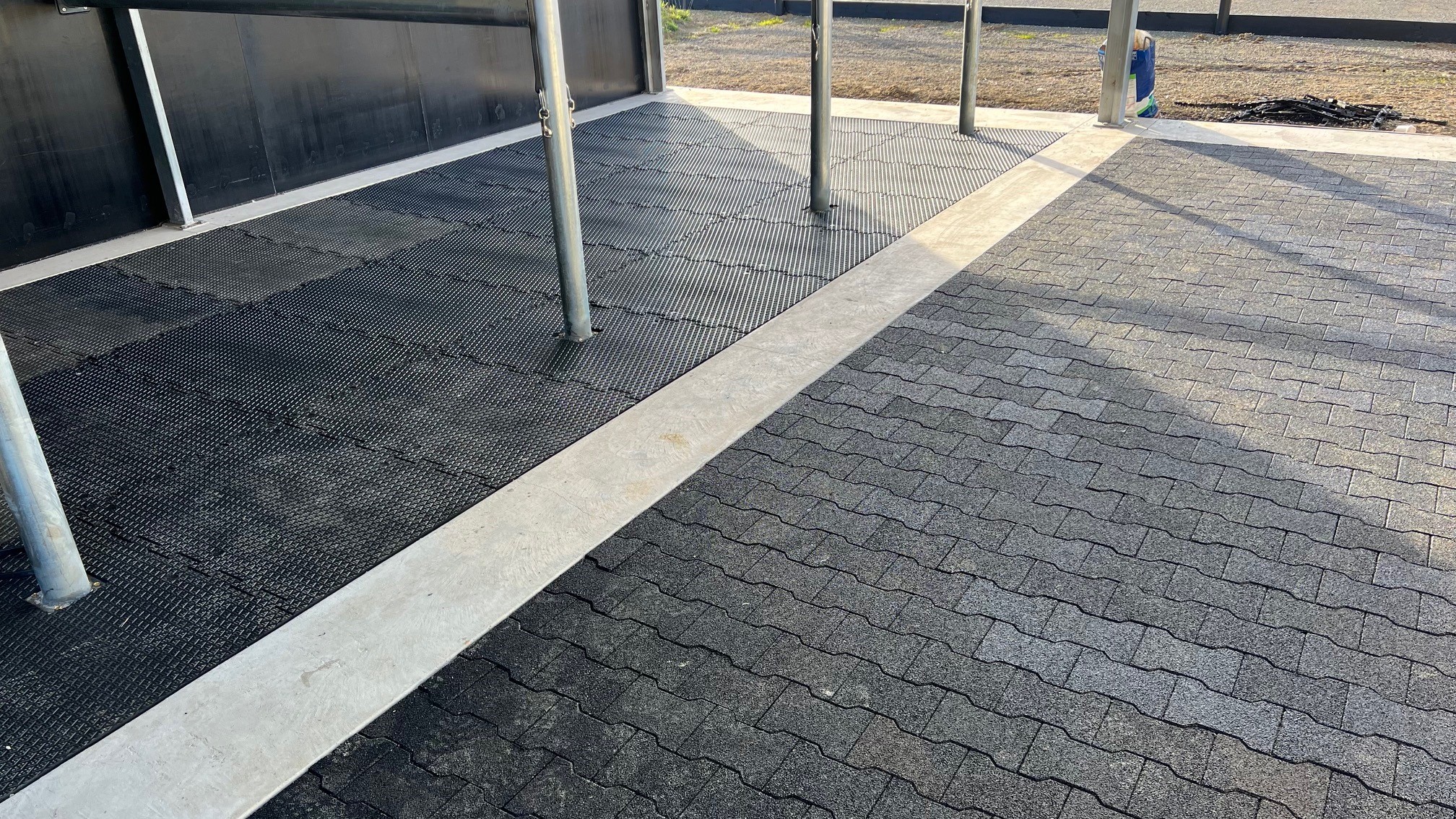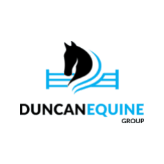Winter is just around the corner, and it’s crucial to gear up your equine property against the harsh elements. Say goodbye to battling mud, cold, and moisture with Duncan Equine’s range of rubber products. This guide will walk you through a straightforward, actionable plan using our top-notch products to maintain clean, functional stables, aisles, and washbays.
Deep clean your stables
Before cold sets in, a thorough cleanup will make sure your stables are ready for the colder months. Begin by removing all non-fixed items from the stable to give yourself room to work. Scrub every surface thoroughly using disinfectant. Make sure all surfaces are completely dry to prevent mould growth and freezing, which can create hazards for your horses and damage your facility.
Instal rubber matting
1. Rubber for wash bays & high traffic areas
High-traffic areas such as wash bays, tie-ups, and walkways can be dangerous for horses and handlers in the winter months. Concrete is commonly used in these areas for its ease of cleaning and durability, but can become hazardous when wet—especially for shod horses. Here’s where Duncan Equine rubber matting comes into play:
-
- Safety and comfort: Installing rubber matting in these areas significantly reduces the risk of accidents by providing a non-slip surface that improves traction, even when wet. This not only protects horses from slips and falls but also the handlers.
- Durability and maintenance: Rubber matting withstands heavy use and provides a safe footing for areas prone to mud and water. It is easy to clean and maintain.

2. Rubber for stables
The safety of stables is a top priority, especially during the winter months when horses spend more time indoors. Duncan Equine’s rubber matting offers several benefits for stable applications:
-
- Rubber in stables prevents them from getting slippery and bogged from muddy hooves – this is particularly useful for facilities where stables have adjoining yards.
- Joint support and shock absorption: During winter when horses spend more time stabled, it’s important to provide a surface that protects their joints. Rubber flooring acts as a shock absorber, offering a softer surface that helps reduce strain on your horses’ joints. Concrete can be jarring and contribute to joint wear.
- Economic and insulative benefits: With rubber matting, there’s less need for deep bedding, which can translate into significant savings on bedding materials and labour involved in mucking out. Additionally, rubber provides excellent insulation from cold concrete floors, keeping the stable environment warmer and more comfortable for your horses.

3. Rubber “Pavers”
For areas where aesthetics are just as important as functionality, Duncan Equine offers “Dog Bone” tiles:
-
- Traditional look with modern benefits: These tiles mimic the look of traditional bricks or pavers but are made from rubber. Available in black or red, they provide a stylish yet practical flooring solution.
- Flexibility and safety: The interlocking pattern of these tiles ensures a secure fit, suitable for any size or shaped area. They are easier to cut and trim than traditional pavers, allowing for custom fits that maintain the integrity and safety of the flooring. The rubber material offers comfort underfoot and reduces the risk of slips, ideal for walkways or public-facing areas of your facility.

Maintain the Cleanliness
Regular maintenance is key to getting the most out of your Duncan Equine mats:
- Quick Clean-Ups:
Duncan Equine mats are designed for easy cleaning. Mucking out and hosing down is quicker and less labour-intensive, which helps maintain a hygienic environment for your horses – essential for keeping the winter mud at bay.
Prevent Mud Buildup Outside
Managing your outdoor spaces effectively can prevent problems before they start:
- Manage Drainage:
Proper drainage is essential to prevent water buildup. Ensure your property is graded so that water flows away from high-traffic areas, reducing the risk of mud and water damage. - Use Gravel or Sand:
In areas prone to becoming muddy, such as gateways or frequently travelled paths, laying down gravel or coarse sand can improve stability and drainage, keeping these areas passable and safe – and minimise your cleaning of indoor areas.
Winterising your property doesn’t have to be a daunting task. With Duncan Equine’s range of rubber products, you can effectively increase the safety, functionality, and comfort of your facilities. Our products are specifically designed to meet the unique challenges of equine care in winter, ensuring that your horses are healthy, you are safe, and your stables are secure. Ready to tackle the winter with confidence? Duncan Equine has you covered.









